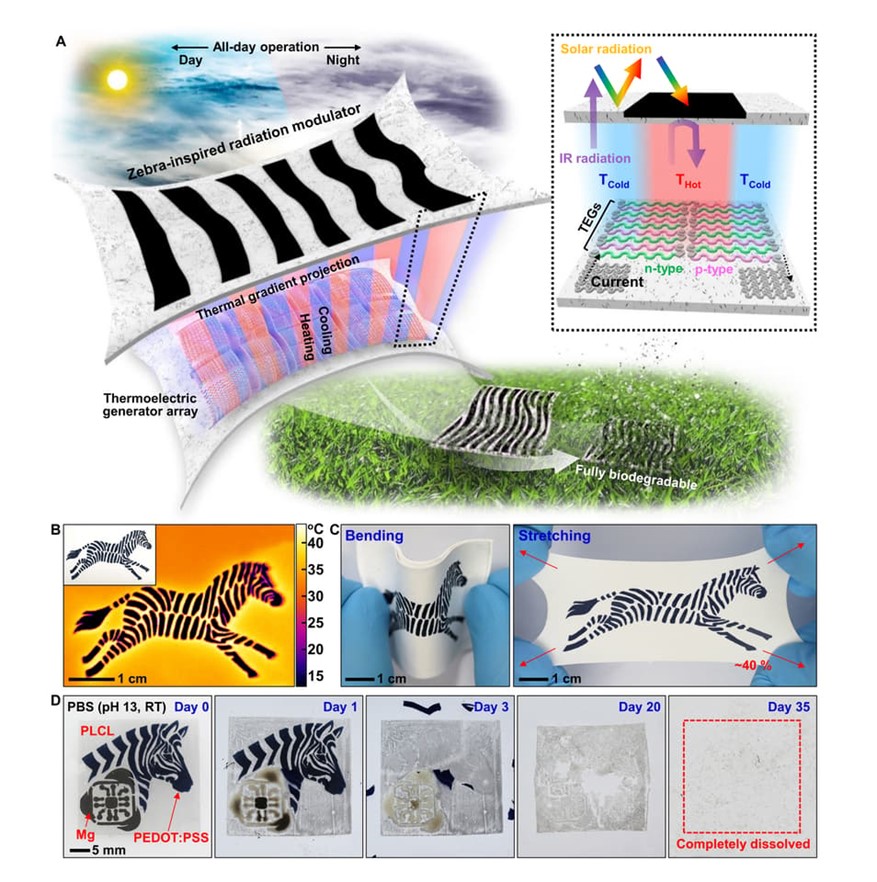
The zebra’s distinctive appearance has been the source of much scientific debate, from its role in predator confusion, to how it can deter horsefly bites. More recently, it was found that the animals can raise the fur of their black segments to transfer heat away from the skin for temperature regulation. Scientists are taking the zebra debate in this new direction, using the animal as inspiration in creating a device that produces electricity using the contrasting shades as thermal conductors.
Researchers at the Gwangju Institute of Science and Technology (GIST) in South Korea have developed a flexible, biodegradable fiber-type thermoelectric generator (TEG), which uses the black and white sections to create a temperature gradient below the surface, which in turn can generate electricity.
“Traditional TEG designs are large and bulky as they rely on natural convection, which leads to an out-of-plane temperature gradient,” says Young Min Song, GIST professor and author of the study. “This requires hard insulators, which limit the application of TEGs in flexible and wearable devices. We have now transcended this paradigm in our design by creating an in-plane device that is flexible and biodegradable. This increases its applicability while reducing its environmental impact by making it scalable, integrable and sustainable.”
Biodegradabe PLCL material, which reflects sunlight and emits infrared radiation to keep the area below it cool, formed the white stripes, while PEDOT:PSS, appearing black to the eye, provided the heat absorption required to create the temperature gradient underneath. With the aid of silicon nanomembranes in the design, the novel TEG design was able to generate a 22 °C (49.6 °F) temperature difference for the gradient.
While the lab model was a small prototype, researchers say it can generate continuous electricity 24 hours a day, and the materials were completely biodegraded in saline within 35 days. The study was published in the journal Science Advances.
 TEXTILES.ORG
TEXTILES.ORG


